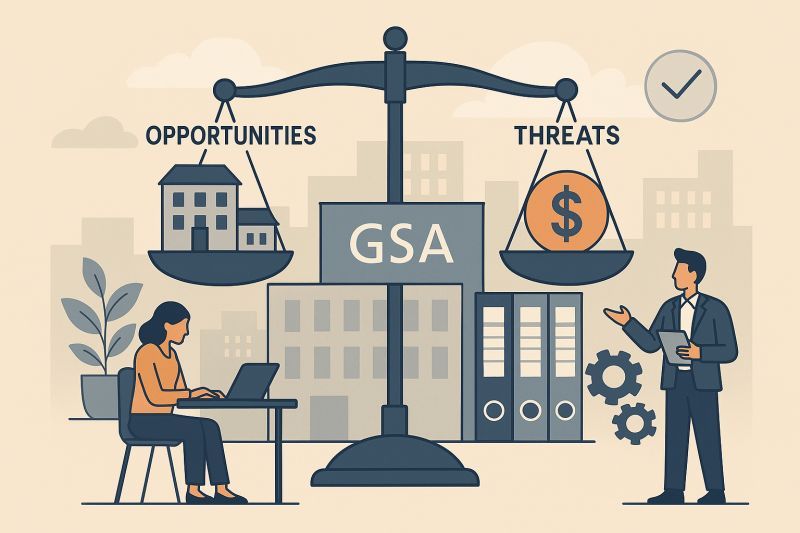Assessing Your Financial Performance: Key Metrics for Government Contract Accounting
By TED ROSE, ROSE FINANCIAL SOLUTIONS
As a government contractor (GovCon), understanding your financial health is crucial for success. Tracking the right metrics can help you stay competitive and ensure compliance with regulations. This guide will help you identify and analyze essential financial metrics for effective government contract accounting.

Key Metrics for Government Contract Accounting
1. Revenue Growth
Revenue growth is a fundamental indicator of business success in government contract accounting. It shows your ability to secure new contracts and retain existing ones. Here’s how to assess it:
- Year-over-Year Growth: Compare your revenue each year to spot trends. Are you growing consistently, or are there periods of stagnation or decline?
- Contract Wins: Evaluate the number and value of new contracts won each year. This helps in understanding how effectively your business is expanding its market reach.
- Retention Rates: Track how many contracts are renewed. High retention rates indicate customer satisfaction and long-term relationships.
2. Profitability
Profitability metrics reveal how well your company manages its costs and generates profits in the realm of government contract accounting. Key metrics include:
- Gross Margin: Gross margin is calculated as revenue minus all non-labor direct costs. This measure provides a clear picture of the business's true economic top line. The primary goal is to increase gross margin dollars.
- Contribution Margin: This is calculated as gross margin minus direct labor costs. It represents the profit generated by a firm's operations, which can be used to cover Sales, General, and Administrative (SG&A) expenses. Traditional finance professionals often refer to this as Gross Profit.
- Labor Efficiency Ratio: This is calculated by dividing Gross Margin Dollars by Direct Labor. This ratio indicates how efficiently your direct labor is converting revenue into Contribution Margin.
- Net Profit: This is revenue minus direct and SG&A expenses and reflects overall profitability after all expenses have been deducted from revenue. As a percentage, it shows how much profit you generate from each dollar of revenue.
- EBITDA: Earnings Before Interest, Taxes, Depreciation, and Amortization. This metric provides a clearer picture of operational profitability by excluding non-operational expenses. This metric is generally utilized to calculate firm valuations.
3. Cash Flow Management
Effective cash flow management ensures you have the liquidity to meet obligations, pay suppliers, and invest in growth. Key metrics include:
- Operating Cash Flow: This measures the cash generated from core business operations. Positive operating cash flow indicates a healthy business.
- Cash Conversion Cycle (CCC): This metric tracks the time it takes to convert inventory into cash. A shorter CCC means quicker cash flow turnaround, which is crucial for maintaining liquidity.
- Days Sales Outstanding (DSO): This measures the average number of days it takes to collect payment after a sale. Lower DSO indicates efficient receivables management, ensuring you get paid faster.
4. Cost Control
Controlling costs is essential for maintaining profitability and staying competitive in government contract accounting. Key metrics include:
- Indirect Cost Rates: This measures the indirect costs that are not directly attributable to a specific contract. Keeping these rate low is crucial for competitiveness and profitability. These rates include fringe benefits, overhead, and general & administrative costs.
- Bid and Proposal (B&P) Costs: Track the expenses incurred in preparing and submitting bids. High B&P costs can erode profitability, so it’s important to manage these expenses carefully.
- Labor Utilization Rate: This measures the percentage of billable hours compared to total hours worked. Higher utilization rates indicate better efficiency and effective use of labor resources.
Get started with ROSE®
Looking for a simpler way to manage your finance, accounting, and tax needs?
Experience the difference that our expert professionals and leading-technology can make.
Analysis Techniques for Government Contract Accounting
To effectively analyze these metrics, consider using the following techniques:
- Benchmarking: Compare your performance against industry standards and competitors. This helps identify areas for improvement and set realistic goals.
- Trend Analysis: Track metrics over time to identify patterns and trends. This can help predict future performance and make informed decisions.
- Variance Analysis:
Compare actual performance against budgeted figures to identify discrepancies and understand their causes.

Leveraging Professional Help in Government Contract Accounting
Managing these metrics and conducting thorough analysis can be challenging, especially for smaller firms. Outsourcing accounting functions and leveraging the expertise of a fractional CFO can offer significant benefits. Outsourcing can provide.
- Cost Savings: Reduce overhead costs associated with in-house accounting staff.
- Expertise: Gain access to seasoned professionals with extensive experience in government contract accounting.
- Scalability: Easily scale your accounting resources up or down based on your needs.
A fractional CFO can offer strategic insights and guidance, helping you navigate financial challenges and optimize performance. They can assist with budgeting, forecasting, and financial planning, ensuring your business stays on track.
Leveraging ROSE® and Easby® for Government Contract Accounting
ROSE is a leading Finance as a Service (FaaS) provider, simplifying back-office operations by aligning People, Process, Technology, Organization, and Data. Their cutting-edge system, Easby, is an enterprise-grade, AI-enabled, hyper-automation system that transforms data into actionable insights to enhance financial performance. With ROSE and Easby, GovCons can unlock their potential and achieve sustainable financial success. By utilizing ROSE and their advanced system Easby, you can gain deeper insights into your financial data, enabling you to make more informed decisions. This combination of expertise and technology provides a robust framework for improving your financial management and achieving long-term success.
Evaluating your financial performance is key to success in government contract accounting. Focus on revenue growth, profitability, cash flow, and cost control. Using outsourced accounting, a fractional CFO, and leveraging ROSE® and Easby® can enhance your financial management and ensure long-term success. With the right metrics and support, you can maintain a strong financial footing and drive your business towards greater achievements.
For more information on how ROSE can assist your business,
reach out to schedule an appointment.

Ted Rose
In 1994 Ted Rose founded Rose Financial Solutions (ROSE), the Premier U.S. Based Finance and Accounting Outsourcing Firm. In 2010, the Blackbook of Outsourcing named ROSE the #1 FAO firm in the world based on client satisfaction. As the president and CEO of ROSE, he provides executives with financial clarity. Ted has also acted as the CFO for a number of growth companies and assisted with various rounds of financing and M&A transactions.
Share this article:
Visit Us On:



